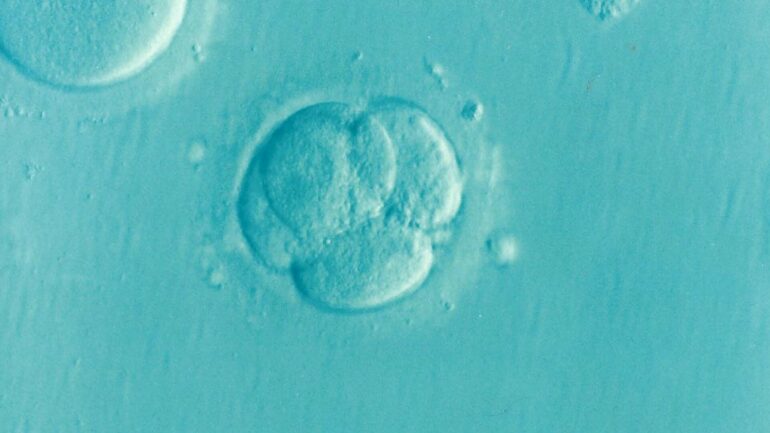A new study using stem cell-based models has shed new light on how the human embryo begins to develop, which could one day benefit the development of fertility treatment.
The study led by the University of Exeter Living Systems Institute has revealed how early embryo cells decide between contributing to the fetus or to the supporting yolk sac. The paper is titled “Naive pluripotent stem cell-based models capture FGF-dependent human hypoblast lineage specification” and is published in Cell Stem Cell.
Understanding this decision is important because the yolk sac is essential for later development in the womb. Producing the right number of yolk sac forming cells may be critical for infertility treatment using in vitro fertilized (IVF) embryos.
Only limited research can be performed directly on human embryos. The research team, which included the University of Edinburgh, therefore used naïve stem cells that are able to make all the cell types and structures of the early embryo. They designed stem cell models to study the formation of yolk sac founders, called hypoblast.
The key discovery is pinpointing a critical signal that acts during a short window of time, less than one day, to trigger cells to become hypoblast. The signal is a protein called fibroblast growth factor that is made within the embryo. Previous studies had missed the importance of this signal in human embryos. The new findings show that the initial processes that form an embryo and its supporting tissues are similar for humans and other mammals.
Lead author Dr. Ge Guo, of the University of Exeter’s Living System Institute, said, “Our findings provide insights into how the correct proportions of different cell types form in the early human embryo. We hope our research will benefit infertility treatment in future.”
Professor Austin Smith, the Director of the University of Exeter’s Living Systems Institute, said, “This study shows the power of stem cell-based models for revealing how the human embryo begins to develop. This marks a significant milestone in stem cell research and embryo models, providing a framework for future research into the early development of the human embryo.”
The work is a collaboration with Professor Jennifer Nichols at the University of Edinburgh.
More information:
Naive pluripotent stem cell-based models capture FGF-dependent human hypoblast lineage specification, Cell Stem Cell (2024). DOI: 10.1016/j.stem.2024.05.003. www.cell.com/cell-stem-cell/fu … 1934-5909(24)00180-2
Provided by
University of Exeter
Citation:
Stem cell study sheds new light on how the human embryo forms (2024, May 31)



